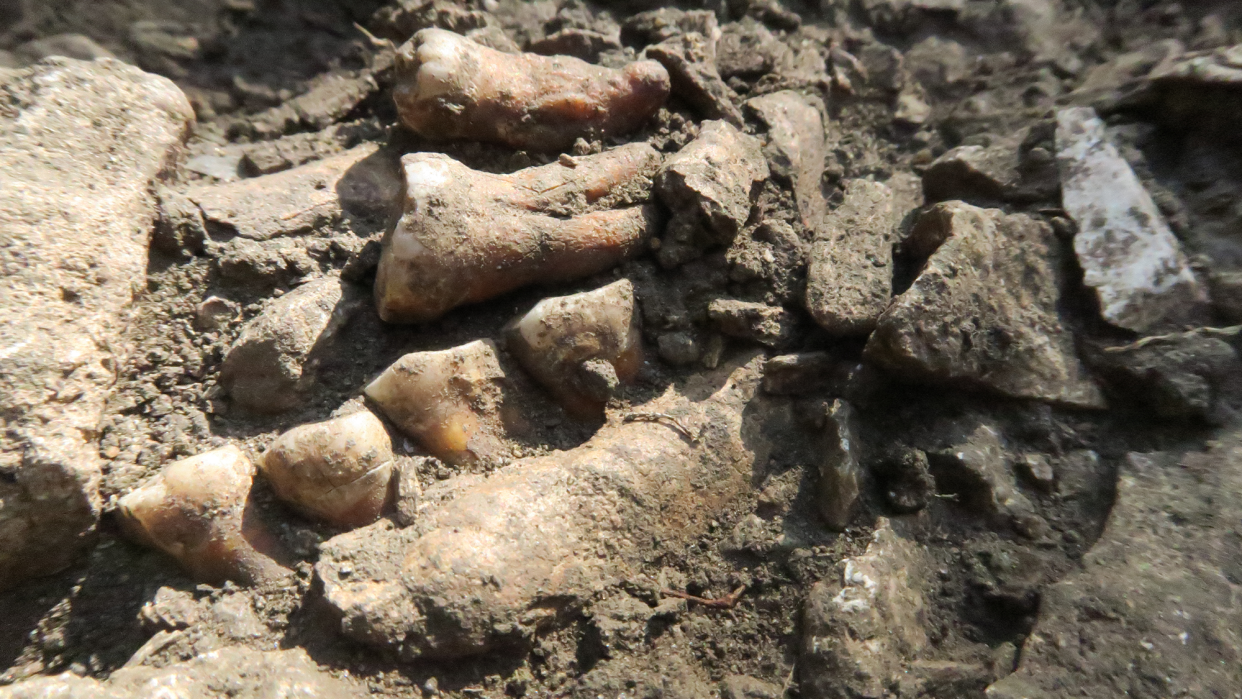Neanderthals’ social isolation may have sped up their extinction

Using DNA extracted from some roughly 45,000-year-old bones, scientists have found a new Neanderthal lineage that likely did not have a lot of interaction with others from its species. The remains belong to a man archeologists nicknamed “Thorin” after Thorin Oakenshield, one of the dwarfs from JRR Tolkien’s The Hobbit. This Neanderthal Thorin lived in a small community in the present day Rh?ne Valley, France.
A new genetic analysis revealed that Thorin’s community was isolated from other groups and diverged from more well-studied Neanderthals about 100,000 years ago. The findings are described in a study published September 11 in the Cell Press journal Cell Genomics and could shed light on the reasons behind this species’ extinction.
[Related: Neanderthals may have been early risers.]
“Until now, the story has been that at the time of the extinction there was just one Neanderthal population that was genetically homogeneous, but now we know that there were at least two populations present at that time,” study co-author and University of Copenhagen population geneticist Tharsika Vimala said in a statement.
In 2015, archeologists first uncovered Thorin’s fossilized remains in Grotte Mandrin, a well-studied cave system. Several ancient tools and remains have been uncovered here and the area is still being excavated. Grotte Mandrin also housed early Homo sapiens, but necessarily not at the same time as Neanderthals.
“The Thorin population spent 50,000 years without exchanging genes with other Neanderthal populations,” Ludovic Slimak, a study co-author archeologist from France’s Université Toulouse Paul Sabatier who first discovered Thorin, said in a statement. “We thus have 50 millennia during which two Neanderthal populations, living about 10 days’ walk from each other, coexisted while completely ignoring each other. This would be unimaginable for a Sapiens and reveals that Neanderthals must have biologically conceived our world very differently from us Sapiens.”
Based on Thorin’s location within the cave’s sediment, the archeologists on the team believe that he lived about 40,000 to 45,000 years ago. This makes him a late Neanderthal or a group that was living up towards the last Ice Age and between 39,000 and 47,000 years ago.
The genomicists on the team then extracted DNA from Thorin’s teeth and jaw and compared his full genome sequence to previously sequenced Neanderthal genomes. This gave them a sense of his age and genetic relationship to other Neanderthals whose genes have been previously uncovered.

Surprisingly, the genomic analysis suggested that Thorin was actually much older than the age estimate from the archaeologists. His genome was distinct from other late Neanderthals and was more similar to the genomes of Neanderthals who lived over 100,000 years ago.
“We worked for seven years to find out who was wrong—archeologists or genomicists,” said Slimak.
To settle this archeological dispute, the team analyzed isotopes from Thorin’s bones and teeth to determine what type of climate he lived in. Late Neanderthals lived during the Ice Age, while early Neanderthals experienced much warmer climate. The isotopic analysis revealed that Thorin lived in a very cold climate, so he was most likely a late Neanderthal.
“This genome is a remnant of some of the earliest Neanderthal populations in Europe,” study co-author and University of Copenhagen population geneticist Martin Sikora said in a statement. “The lineage leading to Thorin would have separated from the lineage leading to the other late Neanderthals around 105,000 years ago.”
When compared to other previously sequenced Neanderthal genomes, Thorin’s genome most closely resembled an individual that was excavated roughly 1,000 miles to the northeast in Gibraltar. Slimak speculates that Thorin’s population likely migrated south to France from Gibraltar.
[Related: Neanderthal genomes reveal family bonds from 54,000 years ago.]
“This means there was an unknown Mediterranean population of Neanderthals whose population spanned from the most western tip of Europe all the way to the Rh?ne Valley in France,” said Slimak.
Understanding that Neanderthal communities were potentially smaller and insular could be critical to understanding their extinction. Genetic isolation is generally considered to be a disadvantage for a gene pool’s population fitness.
“It’s always a good thing for a population to be in contact with other populations,” said Vimala. “When you are isolated for a long time, you limit the genetic variation that you have, which means you have less ability to adapt to changing climates and pathogens, and it also limits you socially because you’re not sharing knowledge or evolving as a population.”
More Neanderthal genomes will need to be sequenced to really understand how their populations were structured and why ultimately they reasons why went extinct. Scientists suspect climate changes, increased competition and breeding with humans, and possibly this isolation and lack of connection with others in their species could have led to the Neanderthal’s eventual demise roughly 40,000 years ago.
“This is in the more speculative end, but even just the notion of being able to communicate more and exchange knowledge is something humans do that Neanderthals to some extent might not have done, due to their isolated lifestyles by organizing themselves in smaller groups,” study said Vimala. “And that is an important skill to have. We see evidence of early modern humans in Siberia forming so-called mating networks to avoid issues with inbreeding, while living in small communities, which is something we haven’t seen with Neanderthals.”
